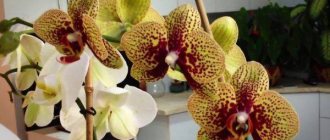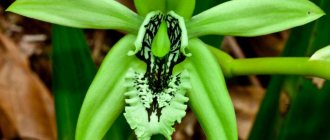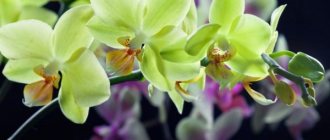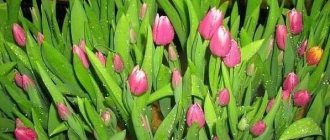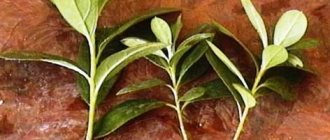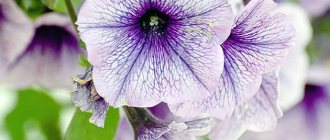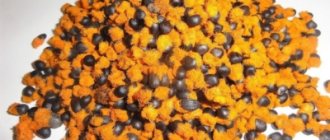The beautiful orchid flower amazes with its magnificence; this genus of plants has about 30 thousand species, of which the rarest is Dendrophylax Linden. This unique plant is also called “Ghost”.
This species received its name due to the structural features and location of its growth. In the tropics, in swampy areas, you can find a white flower “floating” in the air. The Linden orchid performs this trick thanks to its system of structure and life activity, namely: the open root system is attached to another vertical plant, often a tree, as a support. Then it produces its long, thin peduncles, on which the miracle of flowering occurs. This way it looks like a white bud hanging in the air.
Detailed description and photo
The scientific name of the Ghost in Latin is Dendrophylax lindenii or Polyrrhiza lindenii . The flower received its name in honor of its discoverer, Jean Jules Linden.
You can often hear the following plant names:
- Dendrophylax.
- Polyriza.
- Linden.
Root system
As already mentioned, Lindena's root system is open, and the plant itself has no leaves . It is the root system that takes over the function of photosynthesis; it also absorbs oxygen, moisture and nutrients. The color of the roots is gray-green.
The roots are smooth, rather thick and long. The length can reach more than 50 cm, and the thickness is approximately 5 mm.
Bud
Orchid buds are beautiful. The shape of the petals will attract the attention of even those who are not at all interested in flowers. These are three beautiful white petals sitting on three sepals. The lip, as the central petal of orchids is called, is greatly enlarged and has a very interesting shape. This shape forms three blades, two of which are elongated and hang down like the legs of a frog. This common comparison gave Dendrophylax another name: frog orchid .
The size of the bud in diameter is 3-4 cm, and from top to bottom it can reach up to 15 cm.
Stems
The stems are thin, almost invisible, reaching a length of up to 40 cm.
Coleman's coralroot orchid
Coleman's Coralroot is a beautiful orchid that can only be found in three locations in Arizona's Sky Islands, with one population in the Dragoon Mountains and two in Santa Ritas.
In the Santa Rita Mountains, one population is growing in the wake of the proposed Rosemont Copper Mine, a massive open-pit mine that could wipe out the entire population.
In Baboquivaris the orchid has already been extirpated, probably due to overgrazing. Surviving orchid populations are threatened by livestock grazing, recreational impacts, and global climate change.
An orchid has neither leaves nor roots and does not produce its own food through photosynthesis.
Instead, it obtains nutrition from a symbiotic relationship with fungal hosts that colonize the roots of trees and shrubs.
Because the orchid is completely dependent on its hosts, it is threatened by any factor that disturbs the soil or threatens the fungi it needs to survive.
The orchid spends most of its life underground, producing flowering shoots only when environmental conditions are suitable.
In any given year, there are far fewer than 200 flowers above ground in all populations combined.
Coleman's coral root, which was discovered as a separate species in 2010, is critically endangered.
Differences from other orchid species
- Leafless existence. It should be noted that at the early stage of development of Polyrhiza, leaves still grow, but during the development of the plant they disappear.
- Open root system, epiphytic lifestyle.
- Large buds, very large and unusual lip (middle petal).
- Until recently, the frog orchid was considered an extinct plant; to this day it remains a rare specimen.
By the way, it was previously believed that the Ghost is a parasitic plant , that is, it draws all resources from the plant to which it is attached. Today, experts claim that the union of Lindena and another plant is symbiotic, or rather the ghost has a symbiosis with mycorrhizal fungi, which supply the plant with nutrients.
Bull Orchid
Dendrobium taurinum is also known as the bull orchid because of its misshapen, horn-shaped petals.
Found in the Philippines and the Indonesian province of Maluku. It grows in coastal mangrove swamps and open wooded plateaus at altitudes below 300 meters above sea level.
They come in green, purple and white colors. The flower size ranges from 5 to 6.5 cm.
When and how does flowering occur?
Lindena blooms from late winter to early spring, however, this beautiful plant does not bloom every year. It begins several years after seed germination.
What it looks like:
- From a shortened stem in the center of the plant, thin and strong flower stalks sprout, diverging to the sides, from 1 to 10 per plant. Peduncles reach 25 cm in length. By June-August, one flower appears on each peduncle. Flowering lasts about three weeks.
- During the flowering period, the petals of the flower bend back, and the lip is pulled inward and turns into a 12-centimeter hanging spur, which is filled with nectar.
- Interestingly, during flowering the color of the petals changes from white to pale green, while the lip remains white.
- The buds exude a bright apple aroma.
Hockstetter's orchid - butterfly
Platanthera Azorica, commonly known as Hochstetter's butterfly-orchid , was rediscovered in 2013 in the central mountain range of São Jorge Island, where it was then thought to be limited to that island in the Pico da Esperanza area.
Although it was first recorded in 1838 , almost two centuries have passed since it was last seen, indicating its rarity.
The Azores Islands have three species of endemic orchids belonging to the botanical species Platanthera, namely Platanthera Azorica, Platanthera Micrantha and Platanthera Pollostantha.
Orchids probably evolved from a single species that emerged as seeds millions of years ago. Genetic testing confirms that the species' ancestry is from Europe or North Africa.
Known locally as concelo do mato, these rare species are threatened by habitat destruction and invasive alien plants and need to be protected.
Caring for a plant at home
Pots for growing ghost orchids are absolutely not suitable. To grow dendrophylax it is necessary to create a so-called orchidarium .
Here's what you need for this:
- Rectangular container like an aquarium.
- Phytolamp.
- Thermometer.
- Hydrometer.
- Wire mesh.
- Ventilation system.
- Moss, expanded clay and peat.
- A piece of wood.
How to create an orchidarium:
- The inside of the three walls of the aquarium are lined with mesh, to which blocks with plants will be attached.
- Moss is placed at the bottom, which needs to be well moistened.
- A fan and lamp are attached to the cover.
- A thermometer and a hydrometer are attached to the walls.
- The plant is carefully attached to the wood using a soft tape and installed in the archidarium.
Necessary conditions for cultivation:
- The temperature during the day should be 30-33 degrees, and at night 20-23 degrees.
- Humidity not less than 80%.
- Regular but not frequent ventilation.
- Scattered light.
- Presence of mycorrhizal mycelium in the substrate.
Water regularly, once a week, the water should be soft, melt or rain water is ideal. It is important to ensure that the water does not stagnate or remain on the roots, but also not to allow it to dry out.
Fertilizing is done along with watering; it is recommended to use 1/4 of the dose indicated in the instructions.
In spring, the orchid begins a resting phase, which lasts until the end of autumn. During this period, it is important to change the temperature: 25 degrees during the day, 12 degrees at night. At this time, it is necessary to reduce watering and fertilizing for several weeks.
Orchid “Three birds” (Threebirds orchids)
Triphora trianthophora is commonly known as the “Three Birds” orchid.
It is endangered in New England and throughout much of its native range in North America.
These rare orchids are small perennial herbs with purple stems and small, fingernail-sized green leaves.
Their flowers open in one single morning, pale pink with green ridges on the lip.
They bloom in semi-dry forests near the bases of deciduous tree trunks.
Diseases and pests
Such a rare plant does not provide the opportunity to conduct disease analysis . Even very experienced flower growers often do not understand the reasons for the death of their exotic beauty.
Prevention consists of maintaining optimal conditions and properly caring for the flower.
In conclusion, I would like to encourage those who wish to have such a rare plant in their collection. Breeding scientists are actively working on the problem of growing ghosts at home. It is quite possible that very soon we will see hybrids suitable for home cultivation. In the meantime, you can visit special nurseries or botanical gardens abroad.
Rothschild's Slipper Orchid
The most expensive orchid in the world is Paphiopedilum rothschildianum , also known as Rothschild's slipper.
This orchid is also known as Sumazau Orchid because the flower's long, wide side petals resemble the outstretched arms of a Sumazau dancer, the most popular dance in Sabah and throughout Malaysia.
What makes it the most expensive orchid is the fact that it blooms for the first time only in the 15th year of its growth .
Due to its high value, it has also earned the nickname " Kinabalu Gold ".
The Rothschild's slipper orchid grows only on the slope of Mount Kinabalu at an altitude of 500 to 1200 meters. Most locals and orchid smugglers know this and steal the flower, leaving them vulnerable to extinction.
The flowers of this species have petals with red spots. Some parasitic flies mistake this for a cluster of aphids. They are drawn to the flower and help in its pollination.
the Rothschild's slipper orchid is red in color and lacks leaves. It can contain up to 6 flowers, but usually 3-4 flowers can be seen on the stem of the plant in its natural habitat.
References
- ^ a b
Checklist of selected Kew World plant families - B. S. Carlsward, W. M. Whitten, and N. H. Williams (2003). "Molecular phylogenetics of the Neotropical leafless Angraecinae (Orchidaceae): a reappraisal of general concepts" (PDF). International Journal of Plant Sciences
.
164
(1):43–51. Doi:10.1086/344757. - "Dendrophylax lindenii in the Flora of North America @ efloras.org." www.efloras.org
. Retrieved September 4, 2022. - Link to Blooming Cultivated Ghost Orchid on Orchid Source Forum - Link to 2nd Blooming Ghost Orchid on Orchid Source Forum
- Sadler, James; Jacqueline Smith; Lawrence Zettler; Hans Ahlborn; Larry Richardson (2011). "Fragrance composition of Dendrophylax lindenii
(Orchidaceae) using a new technique applied in situ."
European Journal of Environmental Sciences
.
1
(2): 137–141. Doi:10.14712/23361964.2015.56. - Johan Pillon and Mark W. Chase (2007). "Taxonomic exaggeration and its impact on orchid conservation". Conservation Biology
.
21
(1):263–265. Doi:10.1111/j.1523-1739.2006.00573.x. PMID 17298532. - ^ a b
Houlihan, Peter.
"Pollination ecology of ghost orchids (Dendrophylax lindenii): first description of Darwin's orchids with new hypotheses." Nature
. Scientific reports. - The Illustrated Encyclopedia of Orchids ISBN 0-88192-267-6
- Bentham, G., (1888). Gardeners' Chronicle, ser. 3 4: 533.
- Pridgeon, A.M., Cribb, P., Chase, M.W., and Rasmussen, F.N. (Editors) (2014) Genera Orchidacearum Volume 6: Epidendroidae (Part 3); pp. 383 et seq., Oxford: Oxford University Press. ISBN 978-0-19-964651-7
